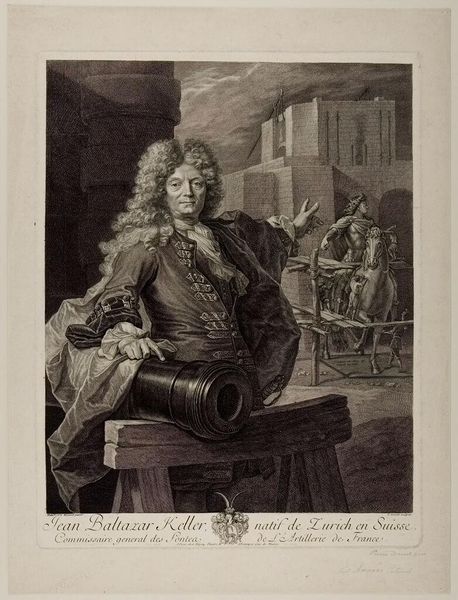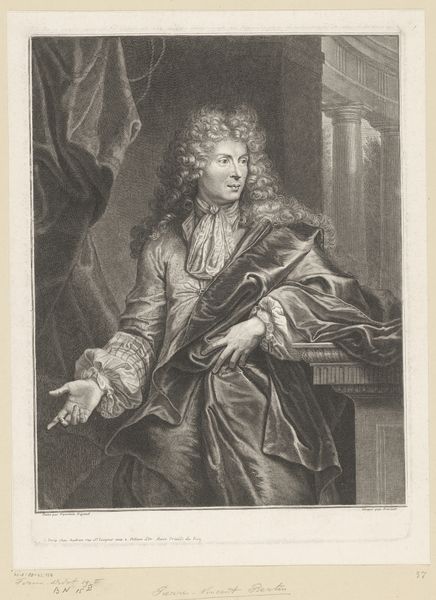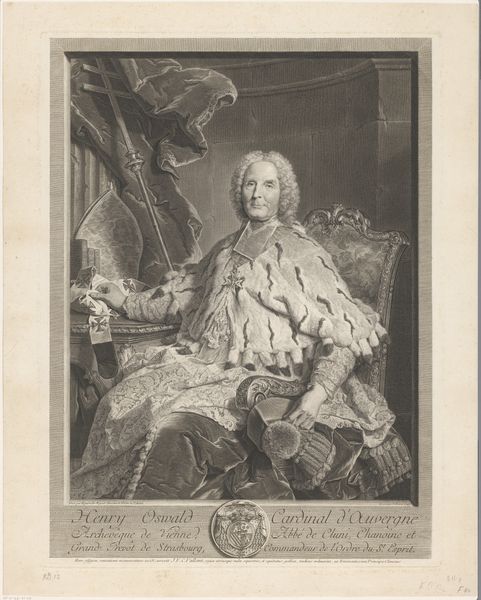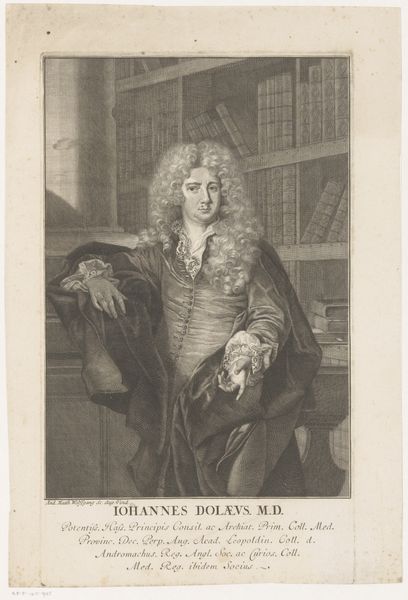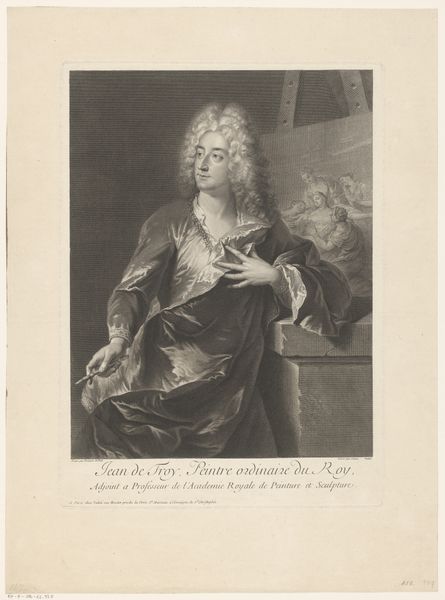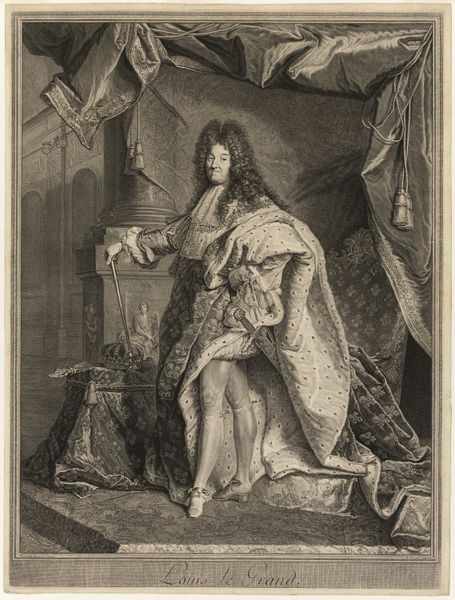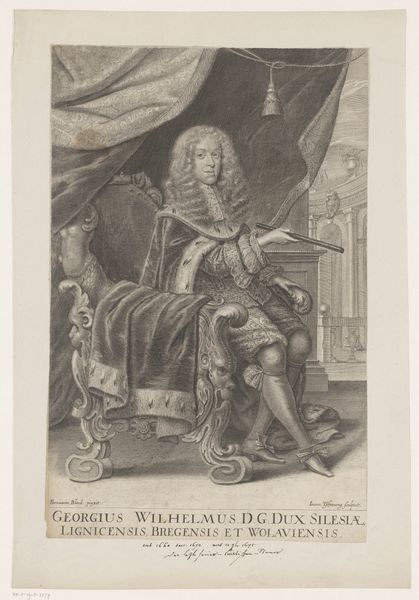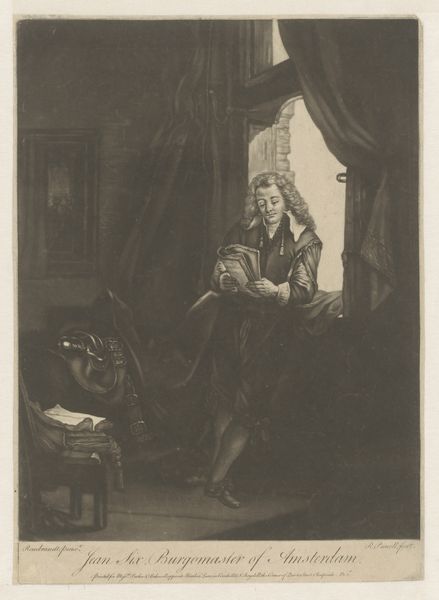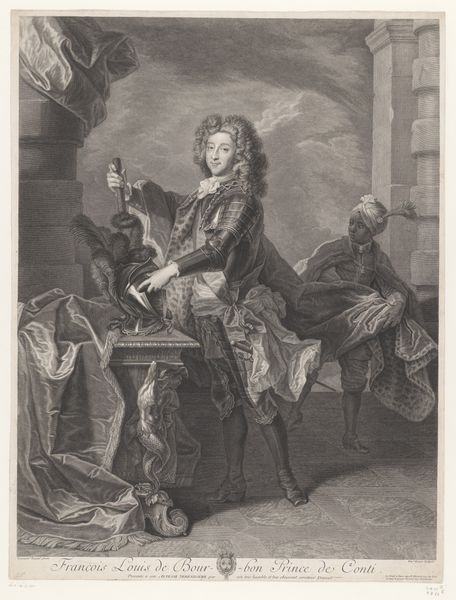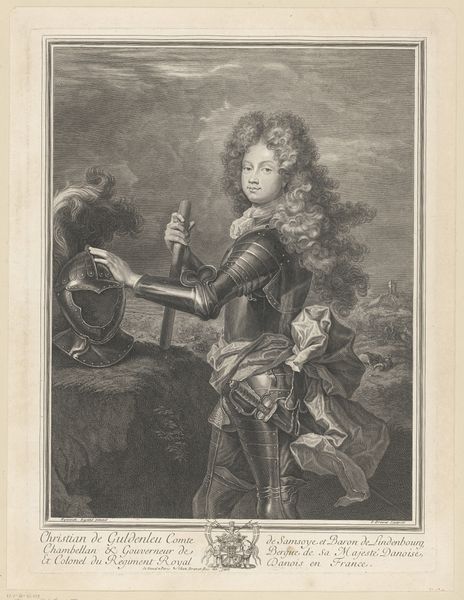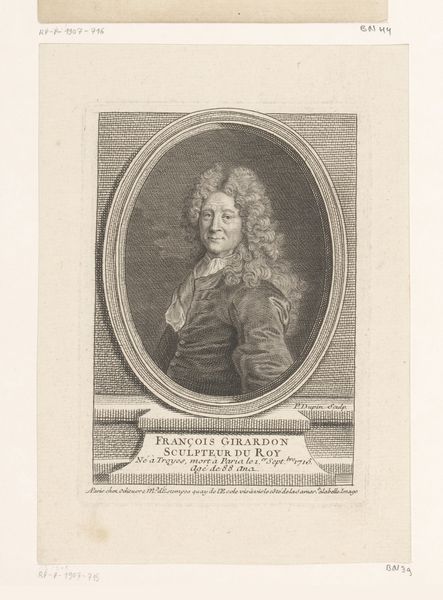
Portret van Jean-Balthazar Keller aan een kanon, wijzend naar een ruiterstandbeeld van Lodewijk XIV van Frankrijk 1693
0:00
0:00
engraving
#
portrait
#
baroque
#
old engraving style
#
history-painting
#
engraving
Dimensions: height 458 mm, width 356 mm
Copyright: Rijks Museum: Open Domain
Curator: What a captivating find from the Rijksmuseum's collection. This is "Portrait of Jean-Balthazar Keller with a cannon, pointing to an equestrian statue of Louis XIV of France" created in 1693 by Pierre Drevet. Editor: Immediately, the contrast between the smooth, almost delicate rendering of Keller's face and the heavy cannon strikes me. It’s such a theatrical and constructed image. You see the machinery, the making of warfare, in very concrete detail. Curator: Absolutely, the symbols here are rich. Keller leans against the instrument of war, and gestures to Louis XIV, representing not just military might but also the divine right of kings and a perceived 'golden age.' It's a projection of power. Note how his Swiss origins are stated so plainly. Editor: I agree. Consider that cannon! That is a specific item, clearly represented with incredible detail from the way it’s rendered, to the placement. Someone knew how such artillery was produced. It brings this grand Baroque gesture back down to earth – a story of resources, skill, and of course, labor. What about that architectural structure? Is it really in relation to the cannon? Curator: The building itself in the background appears formidable. Its high vantage and solid composition may suggest safety, an impregnable edifice of protection, even as its own military capacity is made plain, in support of the French king. I see a desire for power in both material and form. Editor: I also wonder about the role of portraiture at this time and its ability to convey and transform identity. Drevet used the engraving process, typically viewed as commercial, in a fine art context. Its distribution changes the dynamics entirely, with implications in terms of cultural reach. Curator: Indeed. In closing, this work offers a rich layering of symbolism that shows how art and commerce meet in depictions of power and status during this transformative historical moment. Editor: Precisely! A reminder that the grand gestures are rooted in very tangible processes and social conditions. Thank you.
Comments
No comments
Be the first to comment and join the conversation on the ultimate creative platform.
